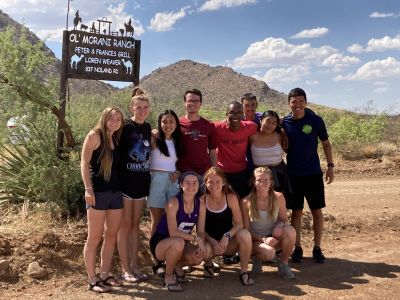Mia Wellington’s describes the ranch in southeastern Arizona where Frances and Peter Grill live and work:
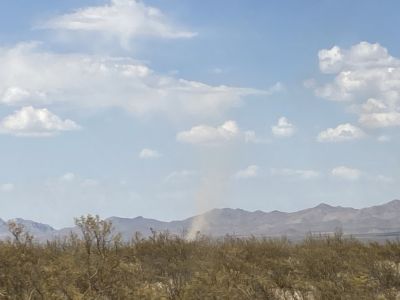
Have you ever heard of a haboob? That’s what ranchers in Arizona call swirls of dust that pop up across the desert on dry days. At first, we were scared to see them because they look like mini tornadoes, but we soon learned that they are very common and almost completely harmless.
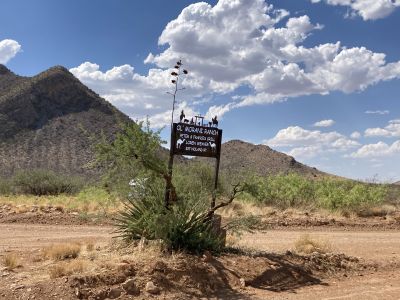
We saw a few of these haboobs while driving in a truck with Frances Grill across Ol’ Morani Ranch in search of cattle. She and her husband, Peter Grill, own the ranch, which is located in south eastern Arizona. Before moving here, they lived in Kenya, where Swahili is spoken. Ol’ Morani means “the warrior” in Swahili.
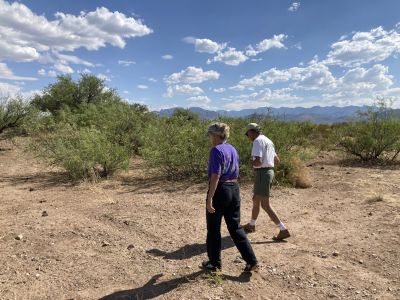
The ranch spans 2,000 acres and they lease about 28,000 more acres from BLM (Bureau of Land Management) on which to run their cattle. Frances and Peter have 100 head of cattle that roam around the 30,000 acres all year long. 100 cows may sound like a lot, but when they are spread across so much land, they can be hard to spot!
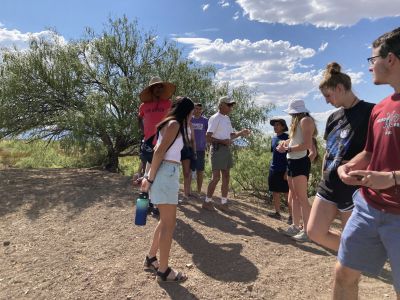
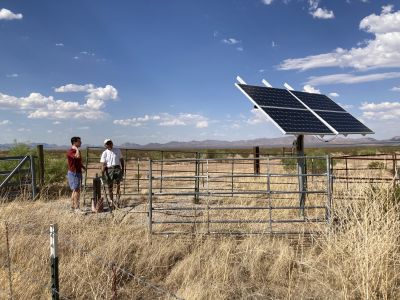
Thankfully, we know that all life needs water to survive. If you’re going to find cows in such an expanse, a good place to start is where water is. Frances and Peter took us to one of the few water tanks they have set up on their land and cows were spotted!
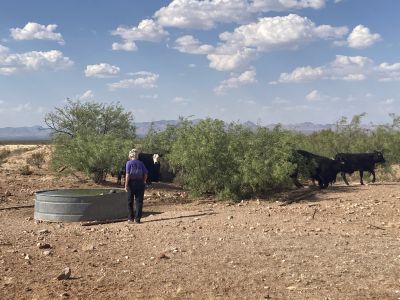
When we first hopped out of the truck, the cows were wary of us, but Frances explained this was a good thing. They don’t want their cows to be too tame, or else they wouldn’t be good at protecting their calves if a coyote came along looking for an easy meal. When deciding which heifers (female cows that haven’t had a baby yet) to keep each year, they pay attention to their disposition and whether they would be a good mother.
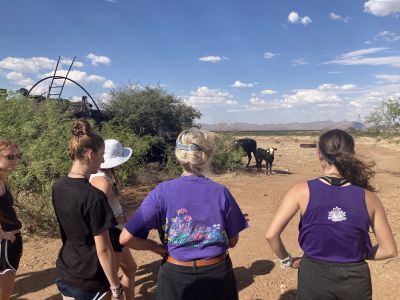
Another thing I noticed was that most of the cows and calves we saw were black with white faces. Frances explained that almost all of their cows are Brangus which is a cross between the Angus breed and Brahman breed. The typical beef cow breed is Angus which are normally all black in color. Angus cows are a very stocky, muscular breed which is the standard of the beef industry. If you start paying attention to food labels, you might notice that some companies take pride in the fact that their beef is pure Angus. However, the Brahman breed is very hardy and thrives in drought conditions.
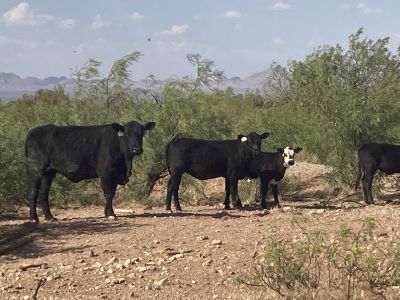
They have a big hump on their neck, similar to camels, and massive ears that help cool them off. Cows don’t sweat effectively, so they use their ears and dewlaps (the extra flap of skin under their neck) to cool themselves off. The combination of these two breeds creates a cow that is stellar at surviving in the harsh climate of Arizona and tasty to eat.
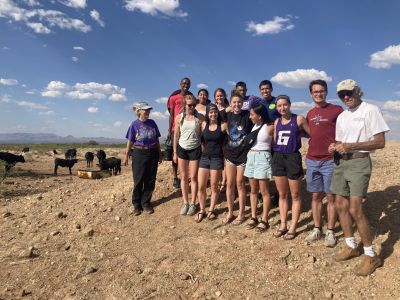
Peter and Frances own and maintain Ol’ Morani ranch with almost no outside help. In addition to their cows, they also have a flock of chickens, six dogs, five horses, three llamas, one alpaca, and one camel named Jasper. Frances brought out some horse treats and each person took a turn feeding Jasper. He gobbled up each one greedily.
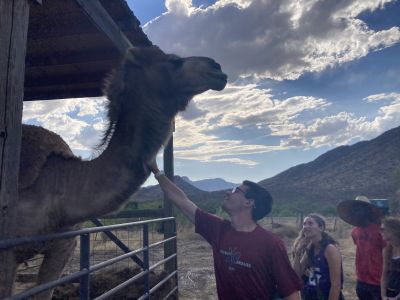
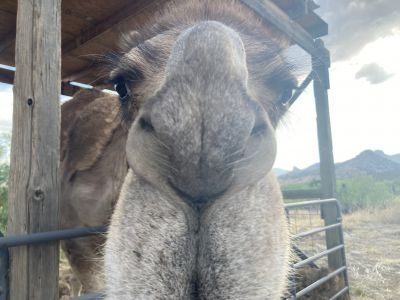
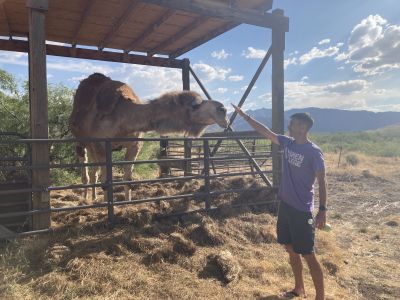
During my conversation with Frances while we were in the truck it came up that I am reconsidering being a nurse. Frances is a nurse but she told me that no matter what I chose, I will end up where I am meant to be and doing something that I enjoy. I shouldn’t worry too much about what my major is now because in the long run I will find what I love doing. Her advice inspired me to be brave enough to allow myself to choose something else. I don’t need to be stuck in something that I don’t enjoy when there are so many opportunities in the world.
